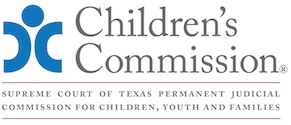A. Statewide Overview of Substance Use
The impact of a Substance Use Disorder (SUD) on the family and individual family members merits attention, as each family and each family member is uniquely affected by the person using substances. Impacts of substance use on the family may include financial challenges, legal problems, and emotional distress.[151]According to the National Center on Substance Abuse and Child Welfare parental substance use was a condition associated with removal in 76.7% of children under the age of one and 62.6% of children over the age of one in Texas in 2021.[152]
1. Relevant Trends
According to the Department of State Health Services, in 2023 there were over 4,900 deaths due to Unintentional Drug Poisoning in Texas.[153] Additionally, data from the 2023 Treatment Episode Data Set showed the top six primary substances among admissions to treatment services in Texas included Alcohol, followed by Methamphetamines, Heroin, Other Opiates/Synthetics, Marijuana/Hashish, and Cocaine.[154] Texas Health and Human Services Commission (HHSC) funds an array of substance use services to help individuals and families address substance use and misuse. For more information, please visit HHSC Substance Use Disorder Services webpage.
For information about drug-related deaths and trends in Texas, please visit the Department of State Health Services Texas Health Data Dashboard.[155]
2. Useful Definitions:
• Substance Use: The use—even one time—of any substance.[156]
• Substance Misuse: The use of any substance in a manner, situation, amount, or frequency that can cause harm to users or to those around them. For some substances or individuals, any use would constitute misuse (e.g., under-age drinking, injection drug use).[157]
• Substance Use Disorder (SUD): A medical illness caused by repeated misuse of a substance or substances. According to the DSM-5, substance use disorders are characterized by clinically significant impairments in health, social function, and impaired control over substance use and are diagnosed through assessing cognitive, behavioral, and psychological symptoms.[158]
• Recovery: a process of change through which individuals improve their health and wellness, live self-directed lives, and strive to reach their full potential. The process of recovery is highly personal and occurs via many pathways. It may include clinical treatment, medications, faith-based approaches, peer support, family support, self-care, and other approaches. Recovery is characterized by continual growth and improvement in one's health and wellness and managing setbacks. Because setbacks are a natural part of substance use, resilience becomes a key component of recovery.[159]
Every public health region in Texas has an Outreach, Screening, Assessment and Referral (OSAR) program which can assist any Texas resident with finding appropriate treatment and community resources. To find local resources and additional assistance, please visit the HHSC OSAR webpage.[160] Individuals can also locate substance use services in their area by visiting the Health and Human Services - Substance Use Service Locations map.[161]
